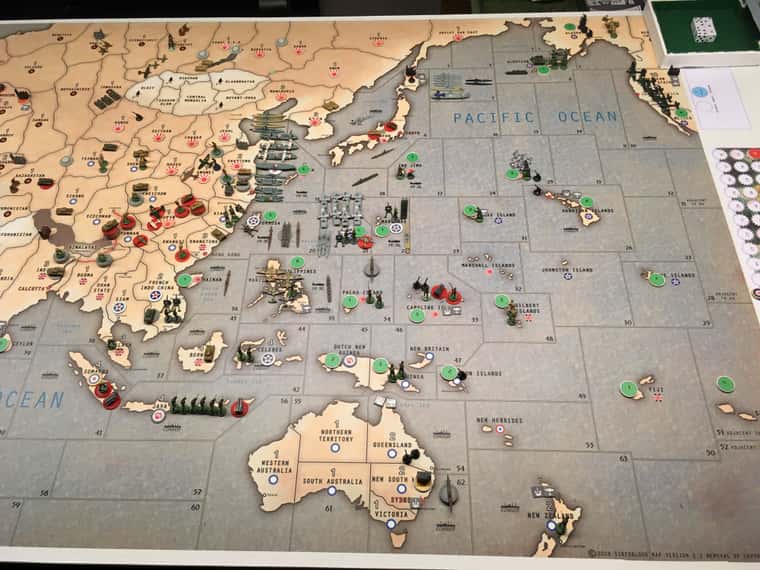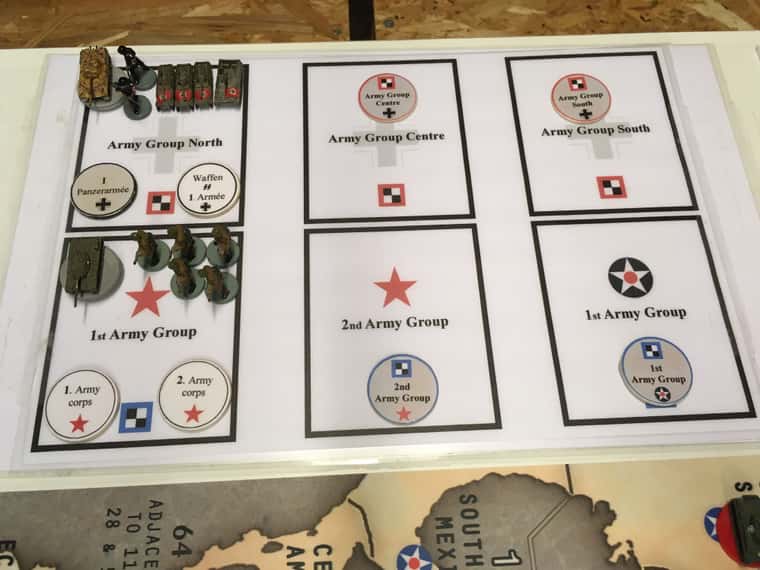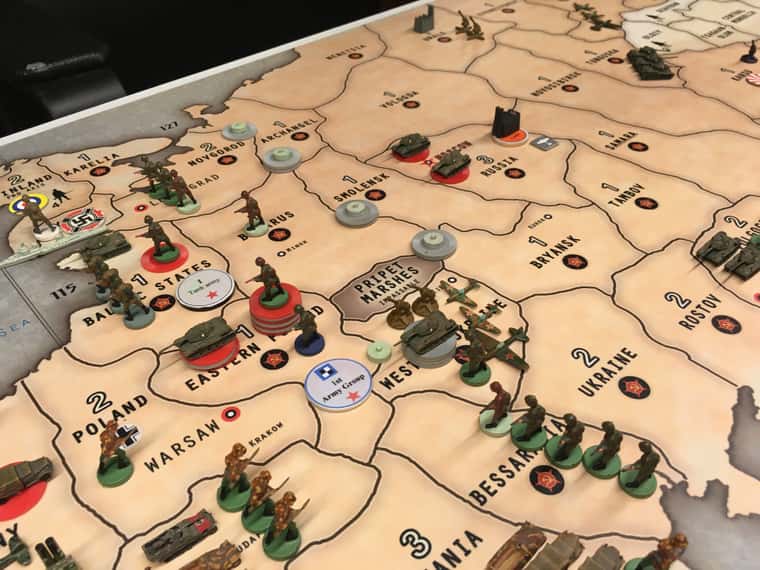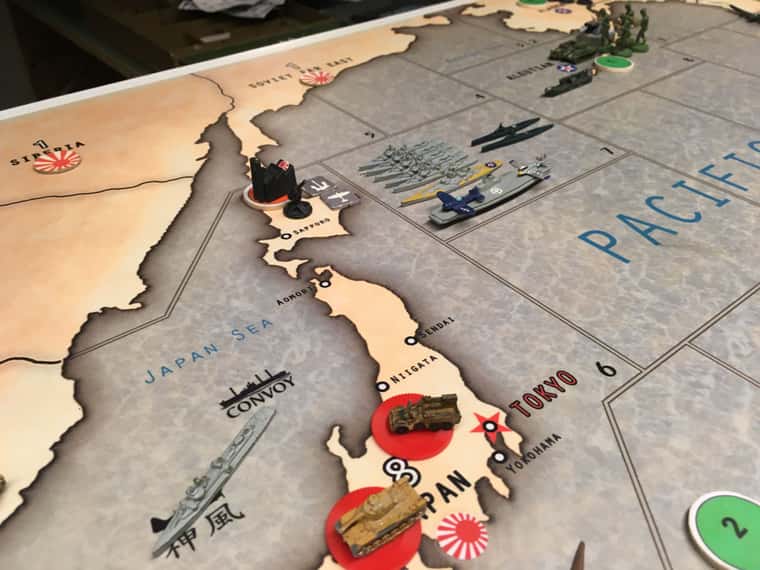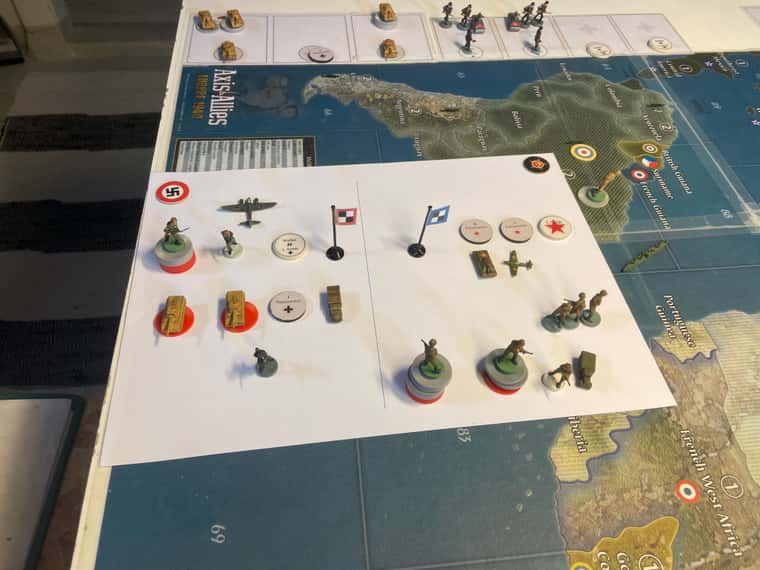Global 1940, No. 8 Game Report: Round Early 1946 (round 13):
This is the only post in the Global 1940 No. 8 Game Report.
Players:
Axis: Butch Cassidy
Allies: The Captain
Germany:
From Early 1940 to Late 1944 Germany launched a Massive U-Boat Offensive in The Battle Of The Atlantic.
Losses on both sides were enormous - casualties for the US Navy included:
- 3 Battleship units
- 2 Super Heavy Battleship units
- 5 Destroyer units
- 3 Escort units
- 12 Transport units
The losses inflicted on the German Kriegsmarine & Luftwaffe included:
- 34 U-Boat units
- 2 Battleship units
- 4 Destroyer units
- 4 Fighter units
- 3 Tactical Bomber units
Germany kept producing U-Boat units throughout the entire War.
As a result of the German increased U-Boat production, progress was slow on the Eastern Front.
In Late 1943, Germany took over Italy.
Army Group North was holding on to Novgorod until Early 1944 when the Soviet 1st Army Group supported by numerous Tank & Infantry units threatened to eliminate Army Group North.
From Early 1944 to Late 1945 the German forces continuously fought a retreating battle on the Eastern Front.
Soviet Union:
From Early 1940 the Soviets prepared their War Machine to withstand a massive German onslaught.
The Soviet Strategic Plan was to build up the Soviet 1st Army Group to include highly mobile units only.
Also, 1st & 2nd Tank Armies were created to move and fight indepently from the Soviet 1st Army Group.
With this Strategic Plan, Soviet units supported by either 1st or 2nd Tank Armies were able to launch attacks from North to South on the entire Eastern Front.
Soviet 1st Army Group was kept as a Highly Mobile Reserve Force in case any German units should break through the Soviet Tank Armies defensive lines.
The Soviet Defense Center of Gravity was kept in the area: Western Ukraine - Bryansk - Belarus.
To counter an expected Japanese offensive in the Far East, Soviet mines were continuously moved by Strategic Rail Movement to defend the lines from Amur - Sakha - Buryatia - Yakut SSR.
When the Japanese offensive was launched in Late 1943, mines were already in place - and they caused tremendous losses on the Japanese Tank & Mechanized Infantry units - and ultimately brought the Japanese offensive to a halt.
In Late 1945, Soviet Armies were on the borders to Poland - ready to launch the Final Assault towards Berlin.
Japan:
From Early 1940 the Imperial Japanese Navy was increased on a massive scale with Transport units.
In Early 1942, Japan launched offensive operations throughout the Pacific Theatre - capturing Philippines, Aleutian Islands, Borneo and Celebes.
China was defeated by Late 1942, bringing a much needed boost to the Japanese War Economy.
In Asia the fight against the British forces was consuming most of the Japanese Imperial Army.
By Late 1943, Japan found itself fighting on all fronts against multiple attacks from ANZAC, USA and United Kingdom.
With the offensive against the Soviet Union in Late 1943, the Japanese forces were simply overstreched - and the frontlines began to crumble under the continous pressure from Allied forces.
Japan had to build up a stronghold in China, to prevent the entire front in Asia from collapsing.
United States:
The United States declared War on Germany & Italy in Early 1941.
Immediately the US War Economy was boosted and a massive build up of both the Pacific Fleet as well as the Atlantic Naval forces began.
Since the US did not declare War on Japan and United Kingdom & ANZAC did not as well - it was up to Japan to take the first agressive step.
When Japan finally attacked the Allies in the Pacific, the US National Guard was immediately activated.
With the Atlantic Ocean crowded with German U-Boats, the US countered this thread with:
- Battleship & Heavy Battleship units
- Destroyer units
- Escort units
- Submarines
- Strategic Bomber units
Each time a German U-Boat formatian was attacked by the US, the US Battleship units was part of the attack force.
In this way, the US Vattleship units take hits - before any other Naval units were lost.
A German U-Boat unit costs 4 IPC. A damage to any US Battleship unit costs 3 IPC in repair.
In this way, the US simply fought the War against the German U-Boats by an Economic War of Attrition - “winning” 1 IPC for each U-Boat unit that was sunk.
Further more, the US Battleship units protected the US Invasion Fleet against German counter attacks from both the Kriegsmarine & Luftwaffe.
Gradually, the US got the upper hand in both the Atlantic & Pacific Oceans.
In Early 1944, the US landed on the beaches of Normandy - opening The Second Front.
From then on, the US & UK Invasion forces were able to push back the German Army, and take of pressure on the Russian front.
United Kingdom:
The Royal Air Force was build up on a massive scale in United Kingdom throughout the War.
Production of Landing Craft units, Infantry, Artillery, Paratroopers & Tank units was gradually increased.
From Early 1942, UK units were continuously launching small scale attacks against Denmark, Norway, Holland-Belgium and Normandy-Bordeaux - heavily supported by the Royal Air Force.
This kept the Germans busy in the Western Europe sphere - and took of some pressure for the Soviets on the Eastern Front.
In Africa, the fighting against both Italian and German units hindered Strategic Rail Movement to India - until the Soviet Union captured Iraq in Early 1942.
In Asia, a War of Attrition against the Imperial Japanese Army absorbed most of the UK units that were produced in India.
A few islands in the Pacific were fortified by UK units - but most of these islands fell into Japanese hands.
In Early 1944, UK units launched large scale attacks in the Western Europe sphere - and together with a massive US invasion force, all German thrown into the battle.
This ended the German reinforcement of the Eastern Front - and from Late 1944 the initiative was solely on Soviet hands.
Italy fought bravely in Africa and the Mediterranian Ocean - but with the United States spending almost 75 % of their income in the Western Europe sphere - and UK units pouring out of the South Africa IC - it was only a matter of time before the Italian units were overwhelmed by superior Allied combat formations.
ANZAC kept launchiung small scale attacks against unprotected Japanese Transports and lonely Destroyers.
Gradually the Japanese naval units were diminished, hindering further advance in the Pacific.
Early 1946:
With Massive Soviet Army Formations advancing unhindered deep into the German Hinterland and towards Berlin - and with an overwhelming Allied IPC Level - the Axis forces had no other options but surrendering.
These pictures show the Military & Economic Situation at the beginning of Germanys turn in Early 1946:



